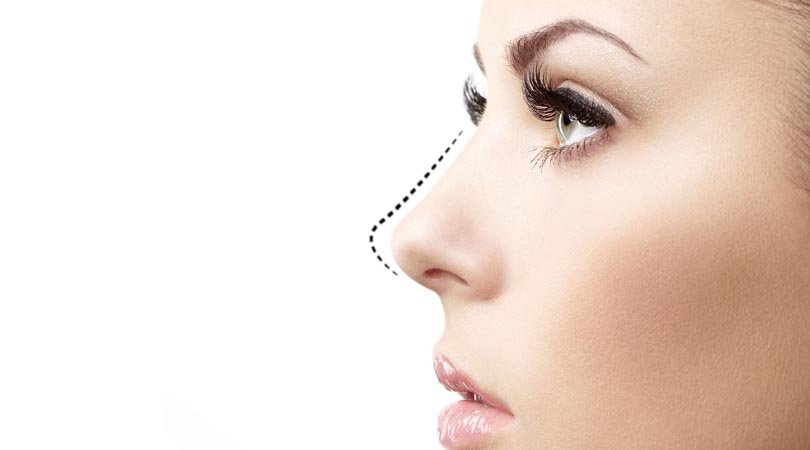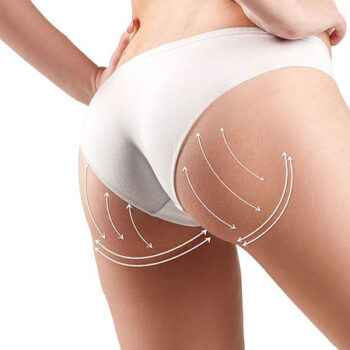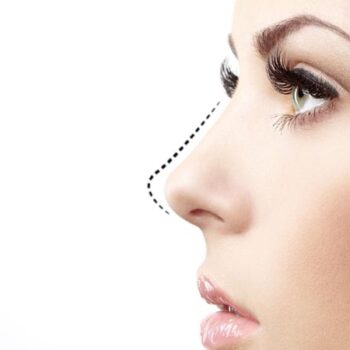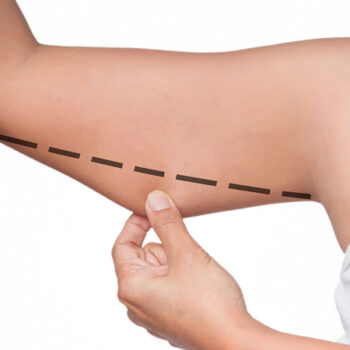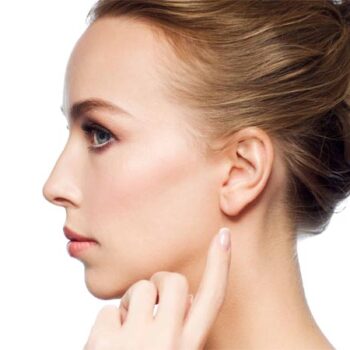The word revision is used today in the sense of revising, rearranging, renewing something. It describes renewing an existing situation, and when used together with rhinoplasty today, and “revision rhinoplasty” defines performing a rhinoplasty surgery after a previous rhinoplasty procedure.
The aim of revision rhinoplasty, also called secondary rhinoplasty, is to perform rhinoplasty again for patients who have had it done before but are not satisfied with the result due to many different factors.
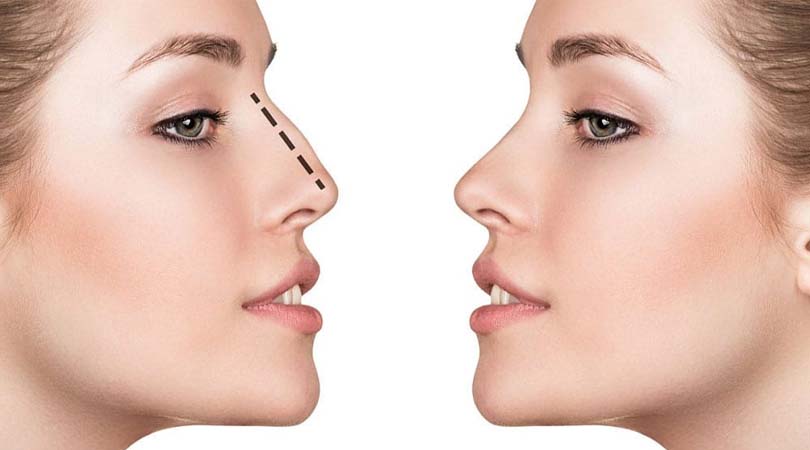
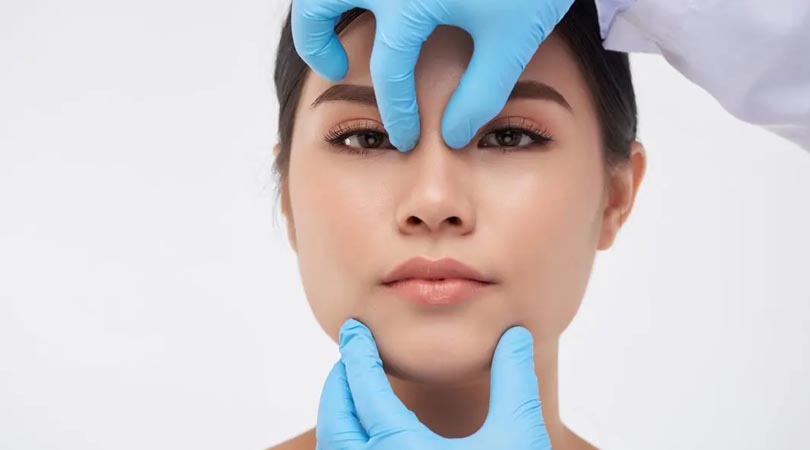
What Is Revision Rhinoplasty?
Revision rhinoplasty is an operation that is often completed in a shorter time compared to the first rhinoplasty operation, but is much more difficult and requires experience. It is very difficult to shape the nasal bone and internal structures in revision rhinoplasty. Since these structures have been previously processed, they may sometimes be insufficient for the desired shape. In such cases, the cartilage taken from the ear or rib is reshaped to provide the desired support for the nose.
For revision rhinoplasty or secondary rhinoplasty, which is more complex than primary rhinoplasty and requires experience, you should choose your doctor very well, and you should prefer a team of experts who have recorded hundreds of cases in this field.
Why Is Revision Rhinoplasty Needed?
Revision rhinoplasty can have many different causes. These reasons can be divided into two as aesthetic and health problems. The aesthetic problems that need revision are generally as follows;
- If there is a significant inequality in the nostrils in the first operation,
- If the nasal arch was not corrected properly in the first surgery,
- If the intervention to the nose wings was insufficient in the first surgery,
- If the harmony and proportion of the nose with the face could not be fully achieved after the first operation,
- If the deformity of the nose was not corrected properly in the first surgery,
In addition to aesthetic problems, secondary rhinoplasty is needed even if there are problems affecting health. For example;
- If there is difficulty in breathing, which is the main function of the nose,
- If there is meat formation in the nose,
- If there is a post-operative curvature of the nasal bone,
revision rhinoplasty is needed.
What Are The Preparation Stages Of Revision Rhinoplasty?
Secondary rhinoplasty, which is a complex and much more difficult operation than primary rhinoplasty, is an operation that requires certain preparations. When our patient candidates come to us for revision rhinoplasty, we make an appointment for consultation in the first place. Then we take the medical history of our patient. Even if he has had surgery before, since his blood values may change, we request re-examinations from our patient so that we can learn whether he is suitable for anesthesia. In addition, during the consultation, we learn the reasons for our patient’s previous rhinoplasty, the details of the intervention and the reasons for their current dissatisfaction. Thus, we plan the revision rhinoplasty surgery in line with the wishes and needs of our patient.
Revision rhinoplasty surgeries are complex operations that require much more precise intervention than rhinoplasty surgeries. Therefore, the operation must be planned very well from beginning to end.
Although it is a complex and difficult process, revision rhinoplasty surgery is much more comfortable for many patients than the first rhinoplasty surgery. Thanks to the first surgery, patients who are experienced in both the preparation and the recovery period become more conscious about the course of the surgery at this point.
How Is Revision Rhinoplasty Performed?
Revision rhinoplasty is an operation performed with more than one technique or different interventions. It is done by producing personalized solutions for each patient instead of the standard procedure. The reason for the revision request of each patient may be different. Patients who apply for revision rhinoplasty for many different reasons, from breathing problems to aesthetic concerns, encounter the following on the day of surgery;
In the first stage, you are visited by your surgeon in the hospital room. This visit is important both to relieve your last worries before the operation and to calm down. After your doctor has given the necessary information, your doctor will go for sterilization while you are prepared by the hospital staff.
Revision rhinoplasty is an operation performed under general anesthesia. You will not feel anything from the beginning to the end of the operation.
In revision rhinoplasty, cartilage tissue taken from the ear or rib is generally used. The reason for this is that the nasal cartilage is mostly used in the first operation and there is not enough tissue in the hand to reshape the nose.
The operations, which are completed in a much shorter time than the primary rhinoplasty surgeries, are completed in an average of 20-30 minutes. The duration varies according to the scope of the revision to be made.
After the operation is completed, a silicone pad and a special plastic splint are attached to the nose, just like in primary rhinoplasty.
Our patient is hosted in the hospital for 1 day, and then they are discharged and sent to his home.
How Many Hours Does Revision Rhinoplasty Take?
While the first rhinoplasty operations take 2-3 hours, revision rhinoplasty operations are easily completed in 20-30 minutes.
What Should Be Considered After Revision Rhinoplasty Surgery?
First of all, since it is a revision surgery, it is important to have realistic expectations. Due to the unfortunate surgery experienced before, our patients may feel more nervous after the surgery because they want to see results much faster in revision rhinoplasty. All kinds of minimal swelling and bruising are also expected in revision rhinoplasty surgeries. Our patients must be patient and trust their surgeons. The recovery process after revision rhinoplasty is almost similar to that of primary rhinoplasty. However, it should be noted here that it is always more difficult to rebuild a broken structure than to build it from scratch. For this reason, our patients should be very careful with themselves during the recovery process and should follow our guidance.
4-5 days after the operation, if a tampon or pad is placed, it is removed with the splint placed on the nose. After revision rhinoplasty, our patients can easily return to work within an average of 1 week. However, if they are doing a job that requires heavy physical activity, they should rest for more than 1 week. Again, in this period, they should avoid all physical positions where they will keep their heads down too much, and avoid sauna, hammam and spa for the first 1 month.
It is a good option to prevent your nose from being exposed to excessive sun for the first 2 months after the operation.
Nose blowing strains the nose and the internal structure of the nose. You should avoid nose blowing in the first 2 months of your revision rhinoplasty surgery. Otherwise, you may cause bleeding in the nose.
You can start all sports like fitness, except walking, from the 2nd month of your revision rhinoplasty surgery.
The final shape of your nose will slowly begin to settle in an average of 6 months.

 Nederland
Nederland Türkçe
Türkçe Français
Français